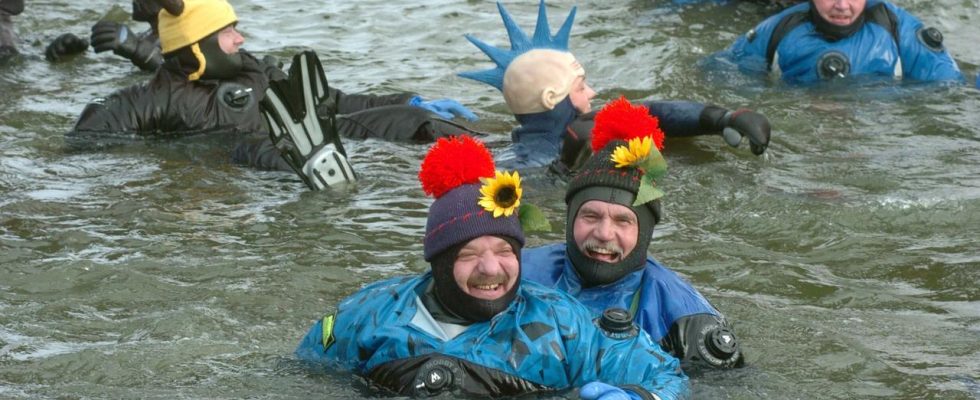Easter and customs are closely linked in Germany. In many places Easter eggs are hidden and fires are lit. In Brandenburg you put on a diving suit or get on a horse.
In Neu Zittau, Brandenburg, the Spree currently has a water temperature of around five to seven degrees. Nevertheless, on Easter Saturday hundreds of daring people will jump into the river again to let themselves drift.
The current is not bad at two meters per second. But speed isn’t important when it comes to “hustle and bustle on the Spree”. What counts on the approximately five kilometer long route to neighboring Erkner is the greatest possible fun.
And so it is not surprising that the people floating on the Spree complement their wetsuits with costumes and sometimes sit in colorfully decorated rubber boats or on self-built rafts on which grills and beer can even be transported. This creates a colorful procession of young and old, which is cheered and admired by hundreds of spectators on the bank.
Sorbian Easter traditions
Compared to the other customs in Brandenburg, the “Spreetreib” is still a relatively young Easter tradition. It took place for the first time in 1996.
But there are also some centuries-old traditions in Lusatia: many Sorbs, a West Slavic people who are known for their rich folklore and mythology, live here. Easter is also associated with many traditions and customs among the Sorbs that are still observed today.
Like the Easter riding: Festively dressed men in frock coats and top hats ride from village to village on Easter Sunday in the south of Brandenburg and in the east of Saxony on horses decorated with flowers and bows. For some it is a spectacle, for others, like Andreas Posselt, a “church service on horseback”.
The “seed riding”
Posselt is riding for the 38th time this year and is also blowing the trumpet. The liturgy specifies exactly which instruments and songs will be played along the way, according to ancient tradition. The riders head to five stations during their three-hour procession through Ostritz. The fields are also blessed.
“We pray for the flourishing of the seeds, for nature and the preservation of creation,” explains Posselt. This tradition of “seed riding” has been proven to have existed since 1628. It was even continued during the GDR era.
Most of the riders are Catholic, reports Posselt. But the event has long had an ecumenical character. The local Protestant priest has been one of the participants for years. Women are now also allowed to take part in Easter riding in the Spreewald.
Sorbian Easter eggs are characterized by their particularly elaborate decorations.
Competition for big and small
The eggs typical of Easter also represent growth in the meadows and fields. Whaleing or egg rolling is considered a fertility charm in Sorbian folklore. The egg not only symbolizes the resurrection of Jesus Christ, but also represents fertility.
Depending on the region, there are different competition variants. What they have in common is that they are held on a sloping track or a hill. In the Easter egg spin variant, the egg that spins the furthest and is still intact wins. The broken eggs must be eaten immediately.
Sorbian Easter eggs
Which is a shame, because Sorbian Easter eggs are characterized by their particularly elaborate decorations. The ornaments, colors and patterns date back to the 17th century and are rich in symbolism and meaning.
The eggs are mainly waxed or scratched and show flowers and tendrils or triangles, lines and dots, from which completely new motifs are created. Easter egg markets take place all over Lusatia, where the hand-painted, traditional Easter eggs are still sold today.
The Easter fire is also part of this weekend for many people in Brandenburg.
The Easter fire
But the most well-known and popular Easter tradition should not be missing in Brandenburg: the Easter fire. It was already kindled by the ancient Germanic tribes and was intended to drive away the winter spirits – and welcome spring and the return of nature. With Christianization, the popular custom of the Easter fire also takes on a Christian meaning.
And so the “Spree Drivers” can not only look forward to a gold medal after the 2.5 hours in the ice-cold Spree, but can also really warm up again at an Easter fire.

